
Akashiwo foam on La Selva Beach, Aptos, California. Credit: Sukee Bennett
I stood with my feet buried in sand, staring at the ocean waves as they touched the beach. It was mid-October.
To my untrained eye, the Monterey Bay shoreline looked like a child’s bubble bath. To California Fish and Wildlife scientists, it was a terrible déjà vu.
Nine years ago, an algal bloom wreaked havoc—and bubbles—on the typically placid Central Coast shoreline. It killed more than 200 seabirds, severely injured another 550, and possibly affected sea otters. It was as if the ocean had become a cauldron of caustic soup.
“We didn’t know what it was at first,” says Corinne Gibble, an environmental scientist for California Fish and Wildlife. She and her team thought an oil spill might have occurred.
Like oil spill victims, washed up birds were cold, starving and covered in an oily slime. They couldn’t fly or feed.
Upon closer inspection, scientists realized it was a harmful algal bloom (HAB)— also called red tide— caused by the alga Akashiwo harming the flocks.
The algae that create HABs sometimes produce natural toxins, like domoic acid and brevetoxin, as they grow and multiply. These toxins accumulate in ocean animals as they eat. HABs can kill or cause illness in fish, mollusks, crustaceans, and even people.
Oddly, Akashiwo is completely benign. But this alga becomes soapy foam when it breaks down and dies. The foam scrubs the natural oil off feathers and fur, stripping them of their water repellency and insulation. Akashiwo’s effect remained cryptic until the 2007 incident and a subsequent (and even worse) case in Oregon and Washington in 2009.

A young gull stands in front of foamy water at Lover’s Point, Monterey. Credit: Sukee Bennett
But this year’s situation is already different.
As of Nov. 2, Gibble says of the birds, “Not many are coming in to rehab with foam issues.” Local rescue organizations, including Beach COMBERS and Wildlife Emergency Services of Moss Landing (WES), are confused why this is.
President and CEO of WES, Rebecca Dmytryk, says that “conditions were just right” for bird mortalities, and that this year’s Akashiwo bloom was “off the chart.”
So why were birds spared?
Perhaps a “learned behavior” was responsible. Seabird survivors from 2007 could know to avoid algae. Gibble said it’s possible, but unlikely. Blame it on birdbrains.
Gibble and Dmytryk’s theory is that seabirds are still en route to the Monterey Bay. The seabirds, which include grebes, loons, scoters and murres, are migratory. They spend their year flying down the California coast to breed and up it to feed. The boat-like species, which spend their entire winter airborne—save when they dive into the waves to catch a fish— return to the Central Coast before winter.
“They may be offshore. The timing of their migration may be a little different,” says Gibble.

Two grebes, a species badly affected in a 2007 algal bloom, in Morro Bay California. Credit: Mike Baird Flickr (CC BY2.0)
But another species affected by Akashiwo is always here: the southern sea otter. Otter fur is similar to bird feathers. It too provides insulation and waterproofing. And otters have more fur than any other animal on the planet—plenty of material for algal foam to adhere to.
But scientists have a hard time pinpointing when and where otters are fouled by foam, says California Fish and Wildlife Senior Environmental Scientist Laird Henkel.
“We’re taking fur samples and conducting detailed necropsies, which will hopefully help us determine if and how severely sea otters might have been affected,” he says. (Necropsies are autopsies of animals.)
If otters were affected, “fouling of any kind” would be obvious. Algal foam would alter otter fur’s ability to trap air. This allows water to seep in instead of bead off, saturating the victim and making it “appear very wet.”
Like their feathered counterparts, it’s unknown whether or not sea otters can learn to avoid the foam.
Henkel believes it’s unlikely. Otters are short-lived, typically surviving to 10 or 15 in the wild. Because Akashiwo blossoms on the Central Coast every decade or so, many otters don’t live to see more than one bloom. And Henkel emphasizes, “they have enormous caloric intake requirements, and they establish preferred feeding areas.”
This fierce loyalty to territories and feeding grounds entails otters are unlikely to relocate because of foam.
But other blooms, including the domoic acid producing Pseudo-nitzchia, can poison otters—and humans.
Pseudo–nitzchia thrives in warmer waters. The toxin it produces accumulates in shellfish like Dungeness crab, making them deadly to dine on. Historically, Pseudo–nitzchia was on scientists and fishermen’s radar when the ocean warms in the spring and summer. But the “blob,” a patch of warm water that emerged on the Central Coast in early 2016, illustrated that HABs can happen at any time.
Scientists believe all HABs are increasing in frequency because of human activity. Our fertilizers, which enter the ocean from waterways and runoff, are fodder for algae. And once algae feed, they multiply. Warmer waters, resulting from global climate change, offer them a warm bath to do it in.
Because sea otters are making a slow comeback from a near extinction, “we need to find things we can mitigate,” says Mike Harris, a senior sea otter biologist at the California Department of Fish and Wildlife.
The rise of algal blooms is one of them.

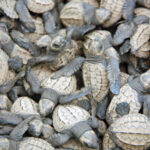
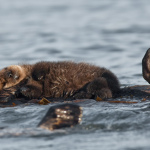

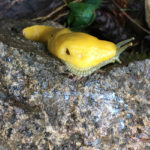
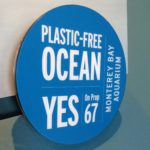
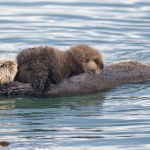
Comments are closed.